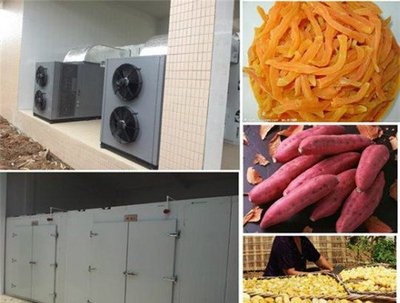
Content Menu
● Understanding Heat Pump Dryers
>> How Heat Pump Dryers Work
● Slim Heat Pump Dryers vs. Regular Heat Pump Dryers
>> Size and Design
>> Efficiency
>> Cost Considerations
● Applications of Heat Pump Dryers
>> Residential Use
>> Commercial Use
● Advantages of Using Heat Pump Dryers
● Key Features to Consider When Choosing a Heat Pump Dryer
>> Capacity
>> Energy Rating
>> Noise Level
>> Drying Programs
● The Importance of Maintenance
● Environmental Impact of Heat Pump Dryers
● User Experiences and Testimonials
● Conclusion
● FAQ
>> 1. What is the main difference between a slim heat pump dryer and a regular heat pump dryer?
>> 2. Are slim heat pump dryers as efficient as regular ones?
>> 3. Can I use a slim heat pump dryer for commercial purposes?
>> 4. How do I maintain my heat pump dryer?
>> 5. What types of fabrics can be dried in a heat pump dryer?
In recent years, the demand for energy-efficient appliances has surged, particularly in the realm of food drying. Among the various options available, heat pump dryers have gained popularity for their ability to conserve energy while providing effective drying solutions. This article will explore the differences between slim heat pump dryers and regular heat pump dryers, focusing on their efficiency, functionality, and suitability for various applications.

Understanding Heat Pump Dryers
Heat pump dryers utilize a refrigeration cycle to remove moisture from clothes or food items. Unlike traditional dryers that expel hot air and consume significant amounts of energy, heat pump dryers recycle air within the system. This process not only reduces energy consumption but also minimizes environmental impact.
How Heat Pump Dryers Work
1. Evaporation: Moist air from the dryer drum is drawn into the heat pump system.
2. Condensation: The air is cooled down, causing moisture to condense into water.
3. Heating: The dry air is then reheated and circulated back into the drum for further drying.
This cycle continues until the desired moisture level is achieved.
Slim Heat Pump Dryers vs. Regular Heat Pump Dryers
When comparing slim heat pump dryers to regular models, several factors come into play:
Size and Design
- Slim Heat Pump Dryer: These models are designed to occupy less space, making them ideal for apartments or smaller homes. Their compact design often sacrifices some capacity for efficiency.
- Regular Heat Pump Dryer: These units typically have larger capacities and can handle bigger loads of laundry or food items. They are suitable for larger households or commercial applications.
Efficiency
Both types of dryers are energy-efficient, but their performance can vary based on specific use cases.
- Energy Consumption: Slim models may use slightly less energy due to their smaller size; however, they might require longer drying times compared to regular models.
- Drying Performance: Regular heat pump dryers generally excel in drying larger loads more quickly, making them more efficient in high-demand situations.
Cost Considerations
- Initial Investment: Slim heat pump dryers tend to be less expensive upfront due to their smaller size and simpler design.
- Long-term Savings: While slim models may save on initial costs, regular heat pump dryers can offer better long-term savings through faster drying times and greater capacity.
Applications of Heat Pump Dryers
Heat pump dryers are versatile appliances used in various settings:
Residential Use
For households with limited space, slim heat pump dryers provide an excellent solution without compromising on efficiency. They can effectively dry clothes, linens, and even delicate items.
Commercial Use
Regular heat pump dryers are ideal for commercial settings such as laundromats or restaurants where large volumes of laundry need to be processed quickly. Their ability to handle bigger loads makes them a preferred choice for businesses.

Advantages of Using Heat Pump Dryers
- Energy Efficiency: Both slim and regular models consume significantly less energy than conventional dryers.
- Gentle Drying: The lower temperatures used in heat pump drying help preserve the integrity of fabrics and foods.
- Environmentally Friendly: By reducing energy consumption, these dryers contribute to lower carbon footprints.
Key Features to Consider When Choosing a Heat Pump Dryer
When selecting between slim and regular heat pump dryers, several features should be considered:
Capacity
The capacity of a dryer is crucial depending on your needs:
- Slim Models: Typically range from 5 to 8 kg capacity, suitable for small households or those with limited space.
- Regular Models: Can offer capacities from 8 kg up to 12 kg or more, making them ideal for larger families or commercial operations.
Energy Rating
Look for models with high energy efficiency ratings (A+++ being the best). Higher-rated appliances not only consume less electricity but also save money on utility bills over time.
Noise Level
Noise can be a significant factor in residential settings:
- Slim Models: Often designed with quieter operation in mind due to their intended use in smaller living spaces.
- Regular Models: May produce more noise due to larger motors but often come with features that reduce operational sound levels.
Drying Programs
Different fabrics require different drying settings:
- Slim Models: May have fewer programs but often include essential cycles for common fabric types.
- Regular Models: Typically offer a wider range of drying programs tailored for various fabrics and load sizes, including specialized settings for delicates or heavy-duty items.
The Importance of Maintenance
Proper maintenance is essential for ensuring the longevity and efficiency of your heat pump dryer. Here are some tips:
1. Clean the Lint Filter: Always clean the lint filter after each use to maintain airflow and efficiency.
2. Check the Condenser: Periodically inspect and clean the condenser unit to prevent blockages that can hinder performance.
3. Ventilation: Ensure there's adequate ventilation around the dryer to allow it to operate efficiently.
4. Professional Servicing: Schedule professional maintenance checks annually to keep your appliance in top condition.
Environmental Impact of Heat Pump Dryers
Heat pump dryers contribute positively to environmental sustainability. By using less energy than traditional drying methods, they help reduce greenhouse gas emissions associated with electricity generation. Additionally, many modern models are designed with recyclable materials and eco-friendly refrigerants that minimize environmental harm during their lifecycle.
User Experiences and Testimonials
User experiences can provide valuable insights into the effectiveness of both slim and regular heat pump dryers:
- Slim Model Users: Many users appreciate the compact design that fits well in small apartments while still delivering satisfactory drying results. They often highlight how these models handle delicate fabrics gently without causing damage.
- Regular Model Users: Users with larger families or commercial needs frequently praise the speed at which these models dry large loads. They report significant time savings compared to traditional options and appreciate features like smart technology that allows remote monitoring via apps.
Conclusion
In conclusion, both slim heat pump dryers and regular heat pump dryers offer unique advantages depending on your needs. If space is a constraint and you require a compact solution, a slim model may be the best choice. However, for those with higher drying demands or commercial applications, a regular heat pump dryer will likely provide better efficiency and performance over time.
When choosing between these two options, consider factors such as capacity, energy efficiency ratings, noise levels, maintenance requirements, and user reviews to make an informed decision that best suits your lifestyle or business needs.

FAQ
1. What is the main difference between a slim heat pump dryer and a regular heat pump dryer?
The primary difference lies in their size and capacity. Slim heat pump dryers are designed for compact spaces with lower capacities, while regular models cater to larger loads and higher demand situations.
2. Are slim heat pump dryers as efficient as regular ones?
While both types are energy-efficient, slim models may take longer to dry smaller loads compared to regular models that handle larger capacities more quickly.
3. Can I use a slim heat pump dryer for commercial purposes?
Slim heat pump dryers are generally better suited for residential use due to their lower capacity; however, they can be used in small-scale commercial settings if the volume of laundry is manageable.
4. How do I maintain my heat pump dryer?
Regular maintenance includes cleaning the lint filter after each use, checking the condenser unit periodically, and ensuring proper ventilation around the dryer.
5. What types of fabrics can be dried in a heat pump dryer?
Heat pump dryers can safely dry most fabrics including cottons, synthetics, and delicate items like wool or silk when using appropriate settings.












